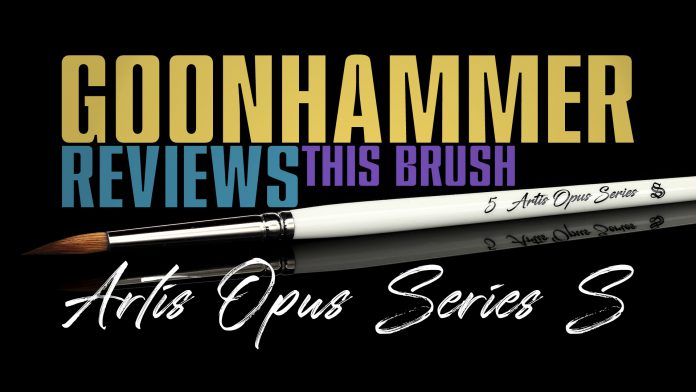I like big brush and I cannot lie.
Specifically, Artis Opus Series S brushes. But what’s to love about these brushes, and why have they become must-haves in the hobby toolkit for some of us here at the Goonhammer Corporate Offices? Read on, dear reader, read on.
But before we begin, I’d like to thank Artis Opus for providing us with brushes for review. Even before that, there were already some of us that were big fans of Artis Opus brushes, which made this review all the more fun. Good stuff.
Big Bellies Are Beautiful
What are we even talking about here? Series S? Brush bellies? Take a step back, and we’ll begin begin by brushing up on some brush basics.
Infernus Marines painted head-to-toe with an Artis Opus Series S Size 5 brush. Only exceptions are transfers on the shoulders and knees, and the muzzle heat effect which was done with an Artis Opus drybrush. Credit: Pendulin
Paint brushes are like people: they come in all shapes and sizes and, like people, they’re topped with a head of hair (bristles) and should be cleaned regularly (you filthy cretin). These specific brushes are made with Kolinsky Sable fur (not human hair, as the analogy would imply – that analogy is over, long live that analogy).
Kolinsky Sable is considered, for good reason, to be among the best material for the bristles of a brush. Why’s that? Something something, interlocking scales, something something surface area. I don’t know. I’m no material scientist. I’m just a simple paint-smith whose honed his craft of slapping acrylic on models, and I know a good brush when I see it.
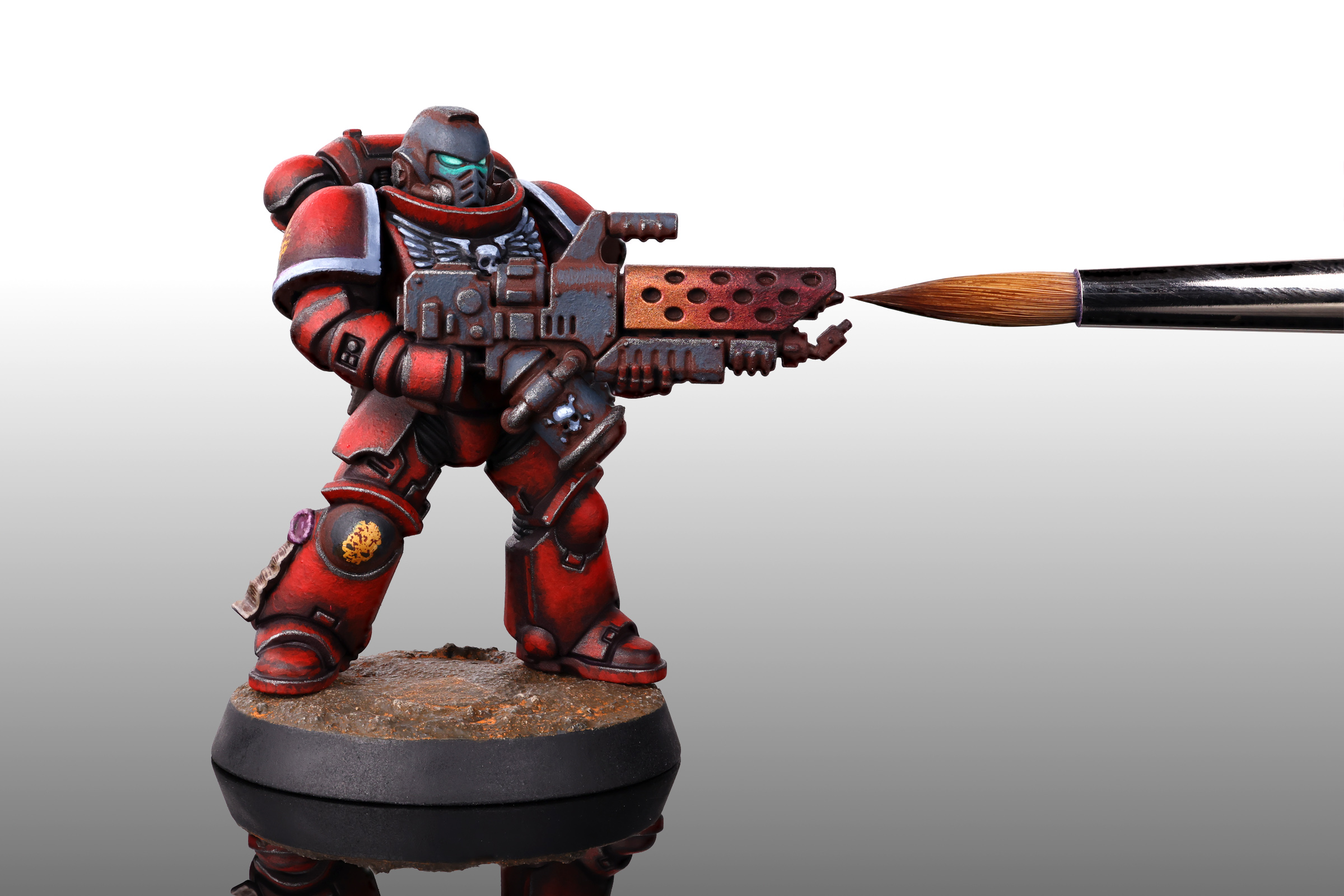
Kolinsky Sable is such a good material for brushes that Artis Opus has two separate lines with it, Series S and Series M. We’re hear to talk about the Series S brushes, but we can do that by contrasting them with the M. The primary difference is that the M brushes have bristles that are a bit shorter, and have a narrower belly. The “belly” of a brush being about halfway from the tip of the bristle to where those bristles meet the metal (the ferrule).
Now that may seem like an odd thing to bring up. How much impact could the belly of a brush have, when the tip seems like the more important part? You’d be surprised. By having a large belly, the brush is able to store more paint with less surface area exposed to the air. This means that the paint on the brush takes longer to dry out, giving you longer working times.
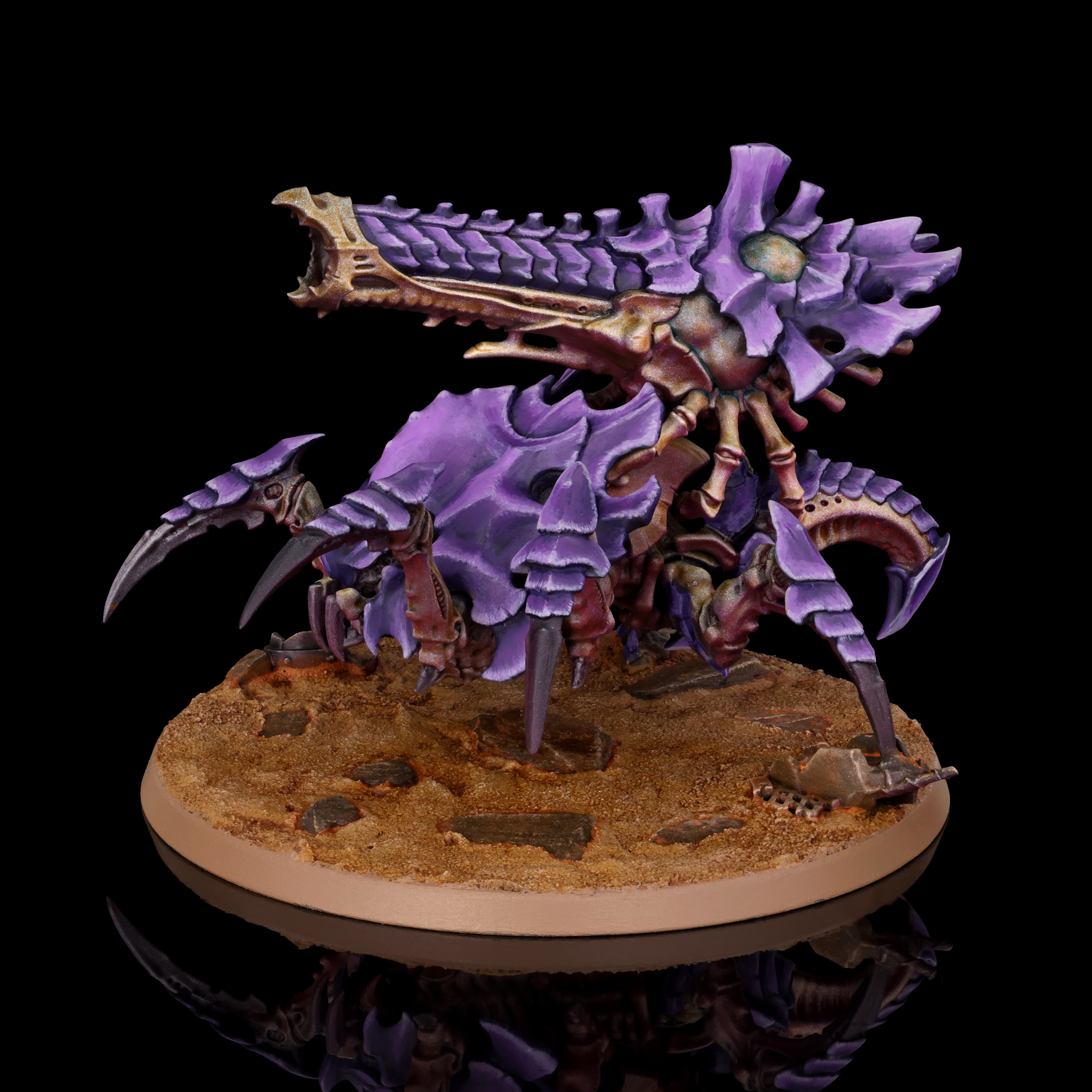
And so long as you properly clean and maintain your brush (which you should absolutely be doing), even the biggest of bellies will maintain a needle-fine tip for precision work.
Not only can you use a brush like this for fine details, but it can easily be a general workhorse brush. Armor, weapons, highlights, shadows, weathering, edging – it’s all good. The big belly gives you a lot of paint and a long working time, so you can easily cover larger areas. You probably wouldn’t want to use a brush like this for bulk terrain, as that’s a recipe for hobby burnout. But anything, I don’t know, human fist-sized or smaller is fair game.
Just to really drive home the point, every model you’ve seen in this article so far was painted exclusively with the Artis Opus Series S Size 5 brush (except the Infernus heat scorching, done with an Artis Opus Series D drybrush). This big beefy monster did everything from ‘nid carapaces to Space Marine Lens OSL.

And speaking of general workhorse brushes, if you’re looking to improve your hobby skills and haven’t yet invested in a good general purpose brush, then that should be at the top of your list. Don’t rush out and buy one of these if you’ve never touched a brush before. Get comfortable with some cheaper brushes first, because you’ll likely destroy them. But once you feel confident in your ability to use an maintain a brush, then definitely step up your game by investing in a high quality brush.

General brush advice aside, what do the different painters here at the Goonhammer Corporate Offices have to say about the Artis Opus Series S brushes?
Pendulin
I’ve been having a blast with the Series S, having used it on a couple boxes of minis already, and I see myself using it on many more to come.
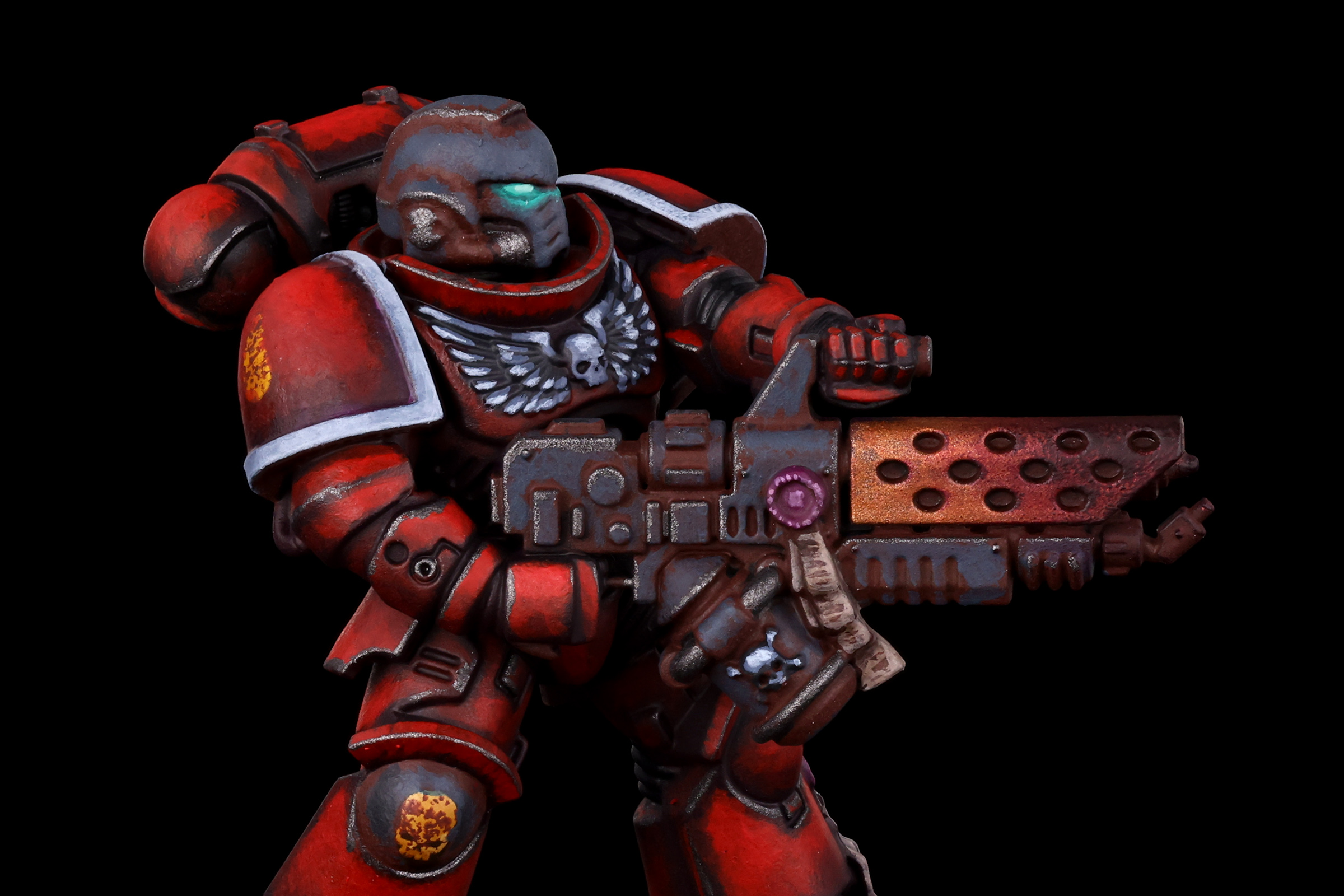
My only complaint about the Series S brushes is that they have a rather steep price tag. I’m more than happy to pay a premium for something I know I’ll use for ages, but I’m also aware that these could be out of the price range for some people.
Personally, I look at brushes the same way I look at shoes. If you buy them cheap, they’ll feel terrible and will need to be replaced soon. If you spend a bit more though, you’ll get something that feels better and will last a lot longer. The cheap brush might save you money in the short term, but if you have to replace it four or fives times per year, how much are you actually saving?
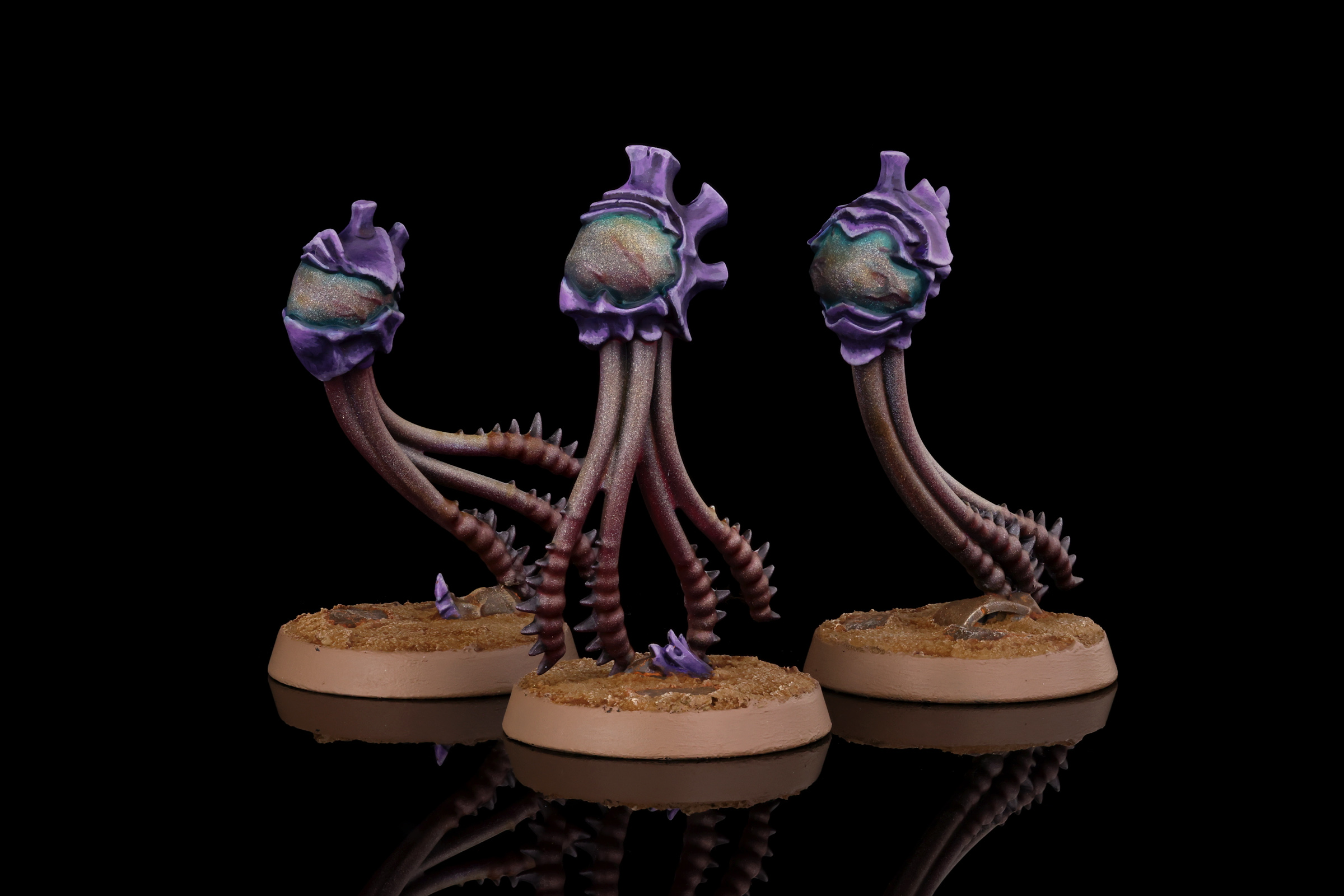
Putting aside the price, how does it compare to other similar, premium brushes? Over the past year I’ve used Raphael, Winsor & Newton, and Citadel STC brushes. All of which are perfectly serviceable, but they’re all taking a backseat to Series S.
Citadel brushes are readily available from nearby hobby stores, Winsor & Newton is a classic name in painting, and I’ve been extremely impressed with Raphael brushes I’ve used. But the Series S brushes eclipse them all. Easily the best among those, in this humble reviewer’s opinion.
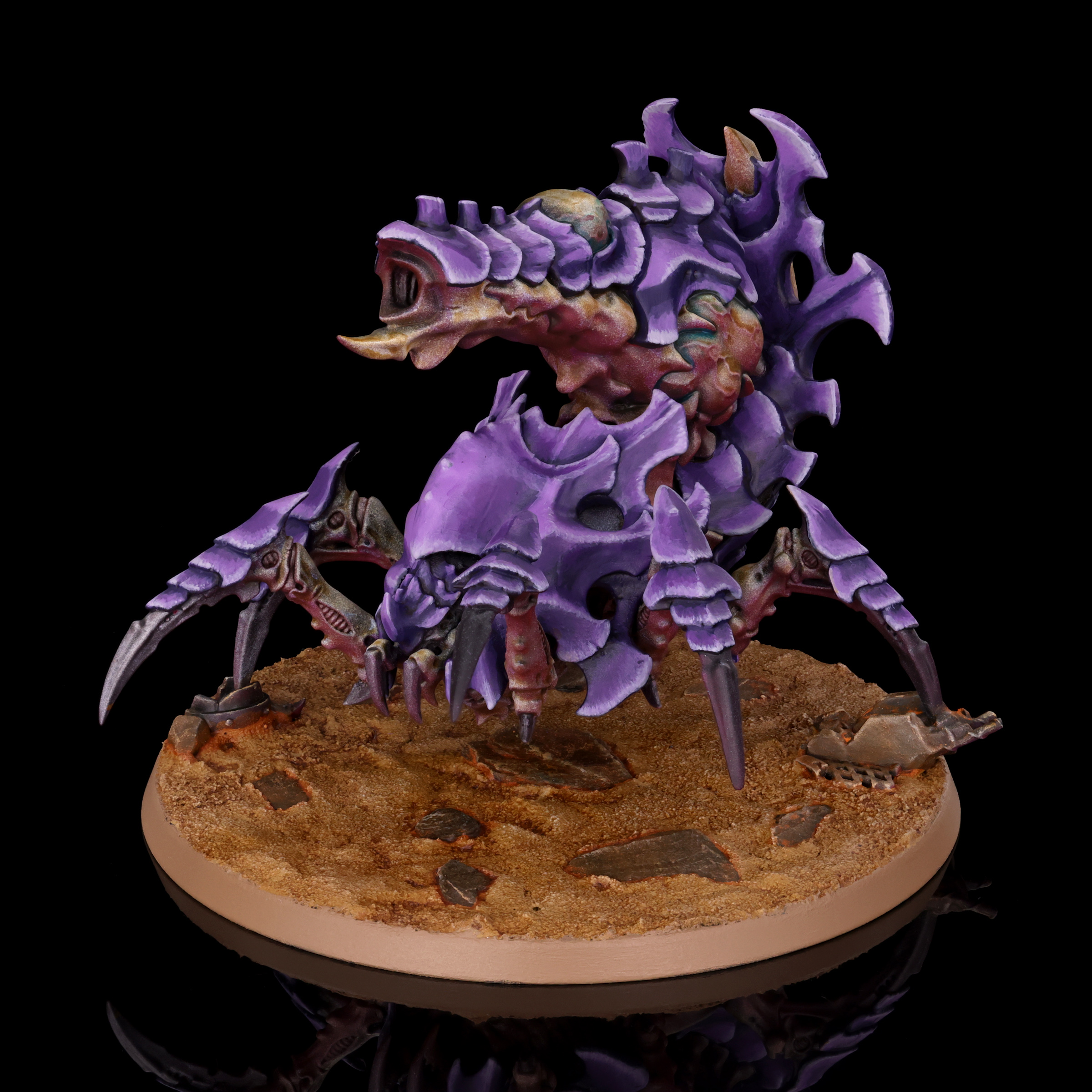
Rockfish
Ok so if you’ve hung around in the hobby chat on our discord long enough you’ll probably already know I almost exclusively use big brushes—size 4+—and the #5 here slots into my usage perfectly. It’s large enough that you can base coat and fine enough of a tip to do (admittedly a little rough) lenses for stuff like Legions Imperialis models.

I did play around with a few other sizes, and it can be nice to make use of a small-bodied brush like a #0 to get into physically smaller places like a titanicous scale warhound’s lenses.

Really the place where the gigantic #5 shines is when you are working on vehicles for games in the scale of 40k, when you have a million edges to highlight the high capacity for paint and the long working time that offers is fantastic. The size also makes base coating a breeze, I’ve watched friends base coat large areas of a marine tank with a worn-out #2, and let me tell you, it looks agonizing.
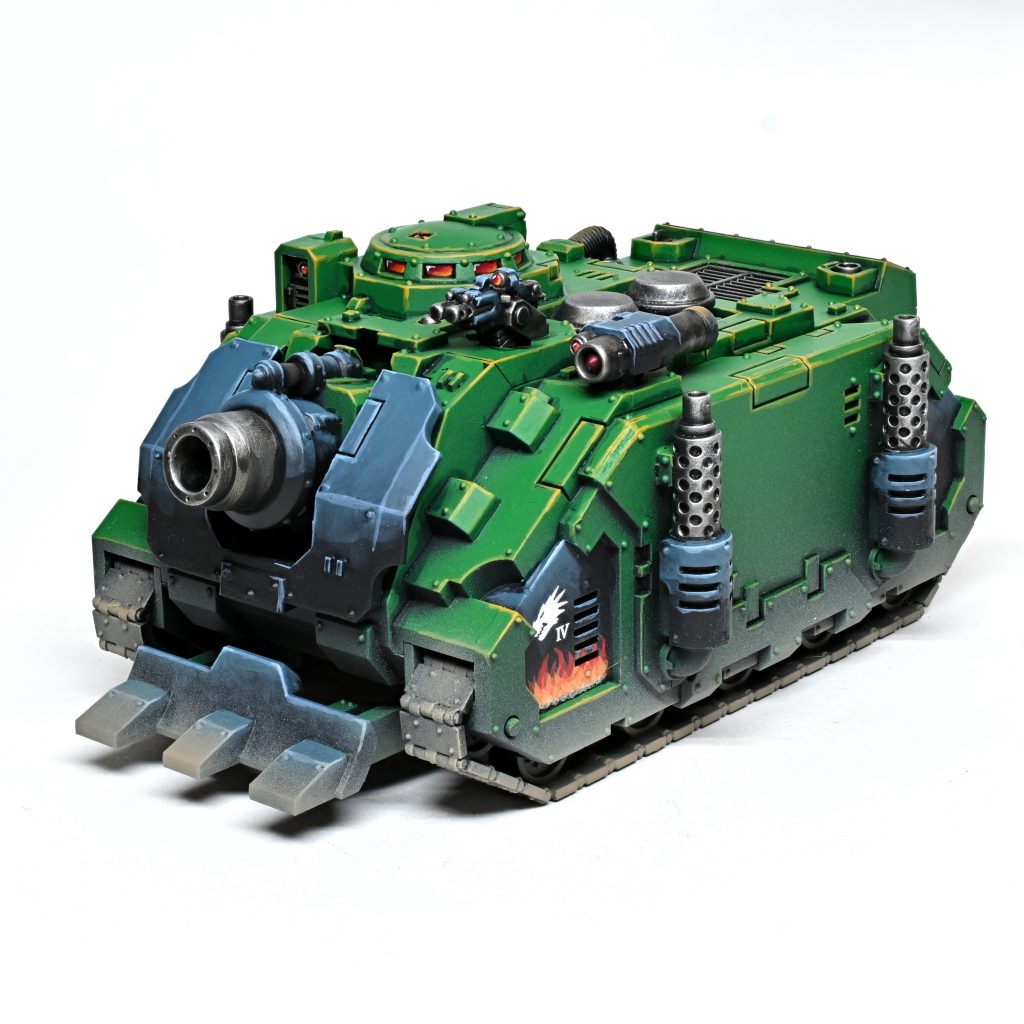
My normal workhorse brushes are Rosemary & Co Series 33 #4s, which is a fairly similarly sized brush if a touch smaller. I found the Artis Opus to be a little ‘softer’ from the start, which makes for a nicer experience when glazing as you don’t need to break in the brush as much. I didn’t see any issues when using the brush otherwise and it didn’t come with the over-length ‘guide’ hair that the R&Cs tend to have, which can often result in a tiny blob of dried paint in an area where the body of the brush can’t keep wet with paint. If I have a minor complaint it’s that their softness means they tend to expand a lot when heavily loaded with thinned washes, so you might need to use a smaller size if you tend towards doing that sort of thing.
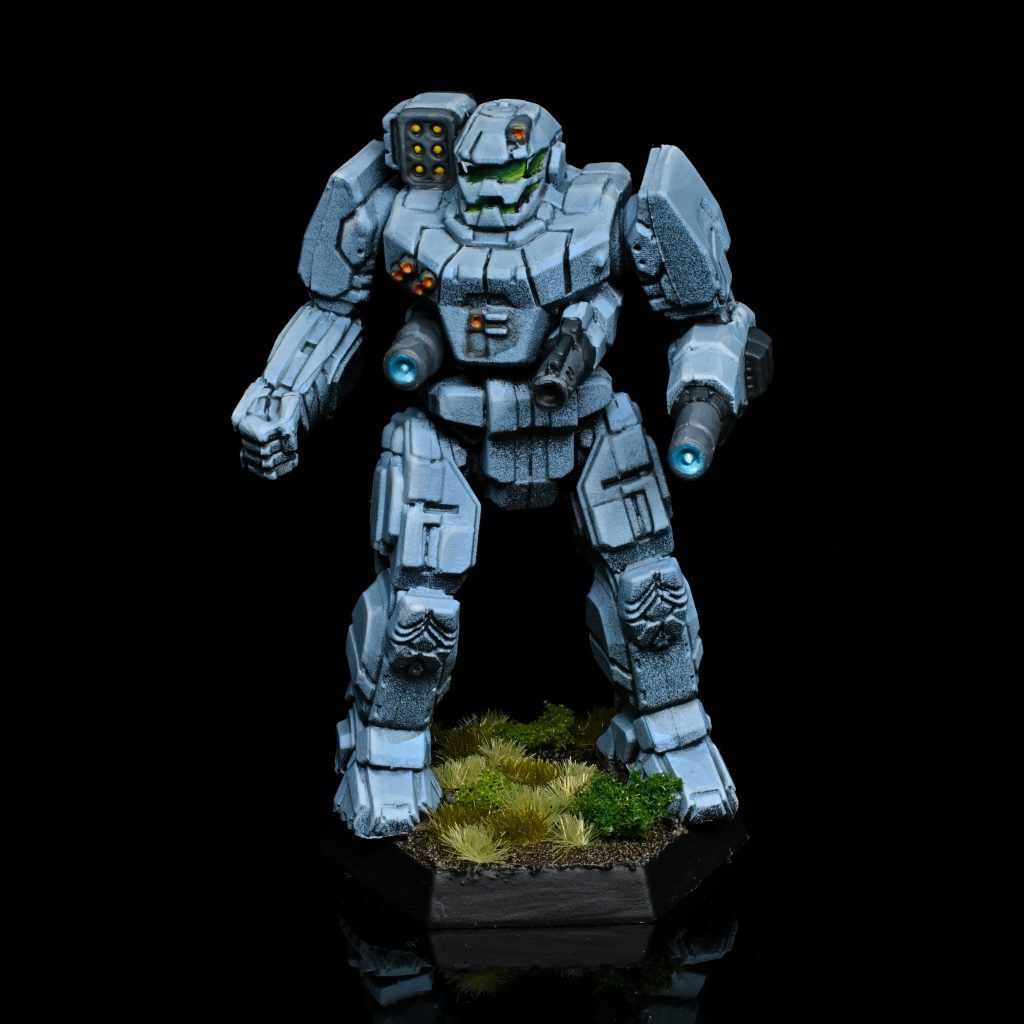
Artis Opus seems to offer a great ‘out-of-the-box’ experience, while I’ve only used the other sizes a little bit they all seemed consistently good from the start, but I can’t say I have used them enough to say how long the brush will last. Brushes for me usually last 3-4 months, but I tend to put them through the wringer with my usual volume of stuff so that’s hardly a complaint about brushes. So far in my month of use, the Artis Opus seems to be pretty comparable to when I first picked it up, I’ve definitely picked up some paint in the ferrule from capillary action with very heavily thinned paints and washes but it doesn’t seem to be affecting performance yet.
Would I recommend the Artis Opus brushes? For sure, I’ve been happy with my use of them so far and if you are gentle on your brushes I expect you can get enough life span out of them to not feel too bad about the price. If you are more on the… destructive side, I might suggest picking up some of the smaller ones and keeping to the cheaper brushes for bulk duty, I tend to have detail brushes in the 10/0 – 0 range that I use for special purposes and can last for literal years. For those sizes in particular, quality control and build matter a lot, since there are so few bristles they each have to be pulling their weight.
Skails
I have been using Rosemary & Co. series 33 brushes and my painting method has centered around a #1 size brush for base coats, then coming back in with a 0 or 2/0 for precision layering and detail work. Initially the #1 would have done the detail work also, but when the point wore out I moved on to the smaller brushes. My painting method tends to be close to a Games Workshop style workflow: base coat, wash if applicable, then layering up with progressively lighter color towards where the light should fall, and a deep line shadow with a dark color if applicable. My layering tends to be sketchy, with stippling and slashes.

The first Artis Opus S series brushes I tried out were the #5 and #3. Their ability to quickly get base coats on and do broad highlighting is impressive. The points are also precise enough to do bigger detailing.
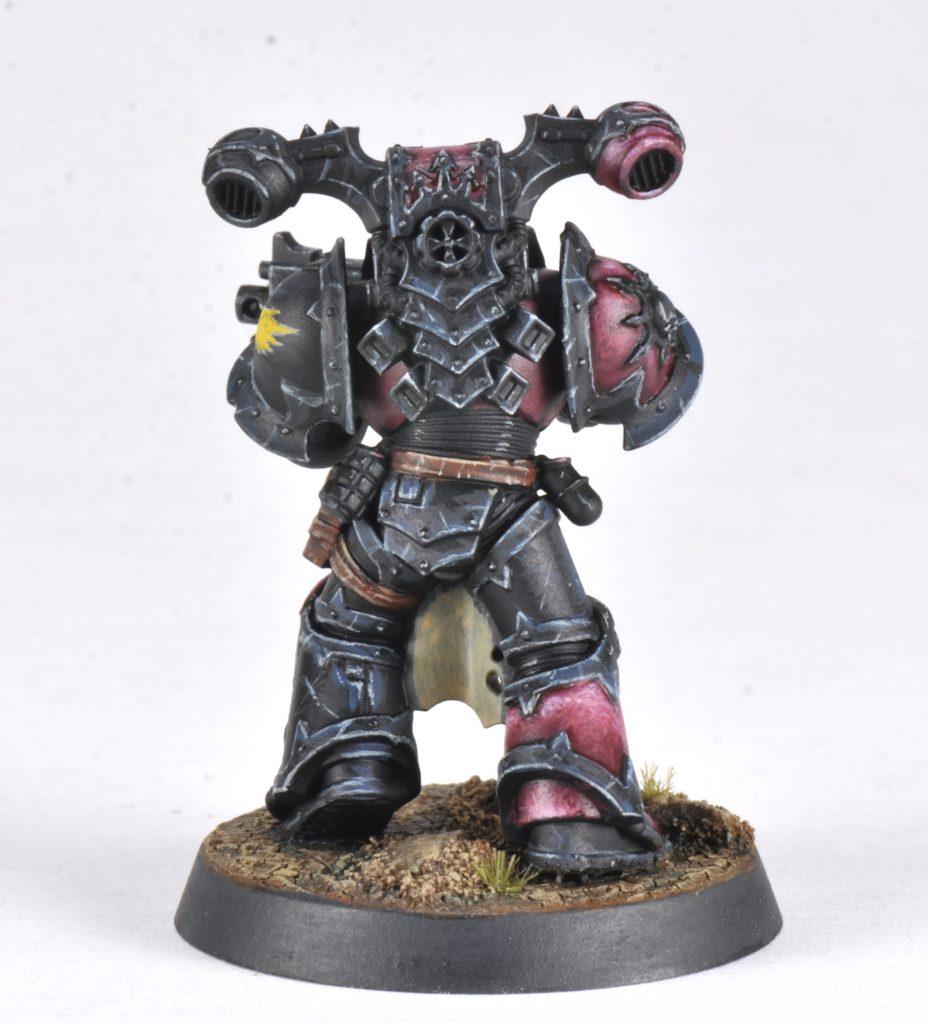
The brush I find myself keep coming back to is the #1. It has too fine a point for broad base coats. However it is exactly as precise as I want. It feels like the brush lays down paint precisely where I want to put it. It’s quite satisfying for the kind of line work I like to do.
SRM
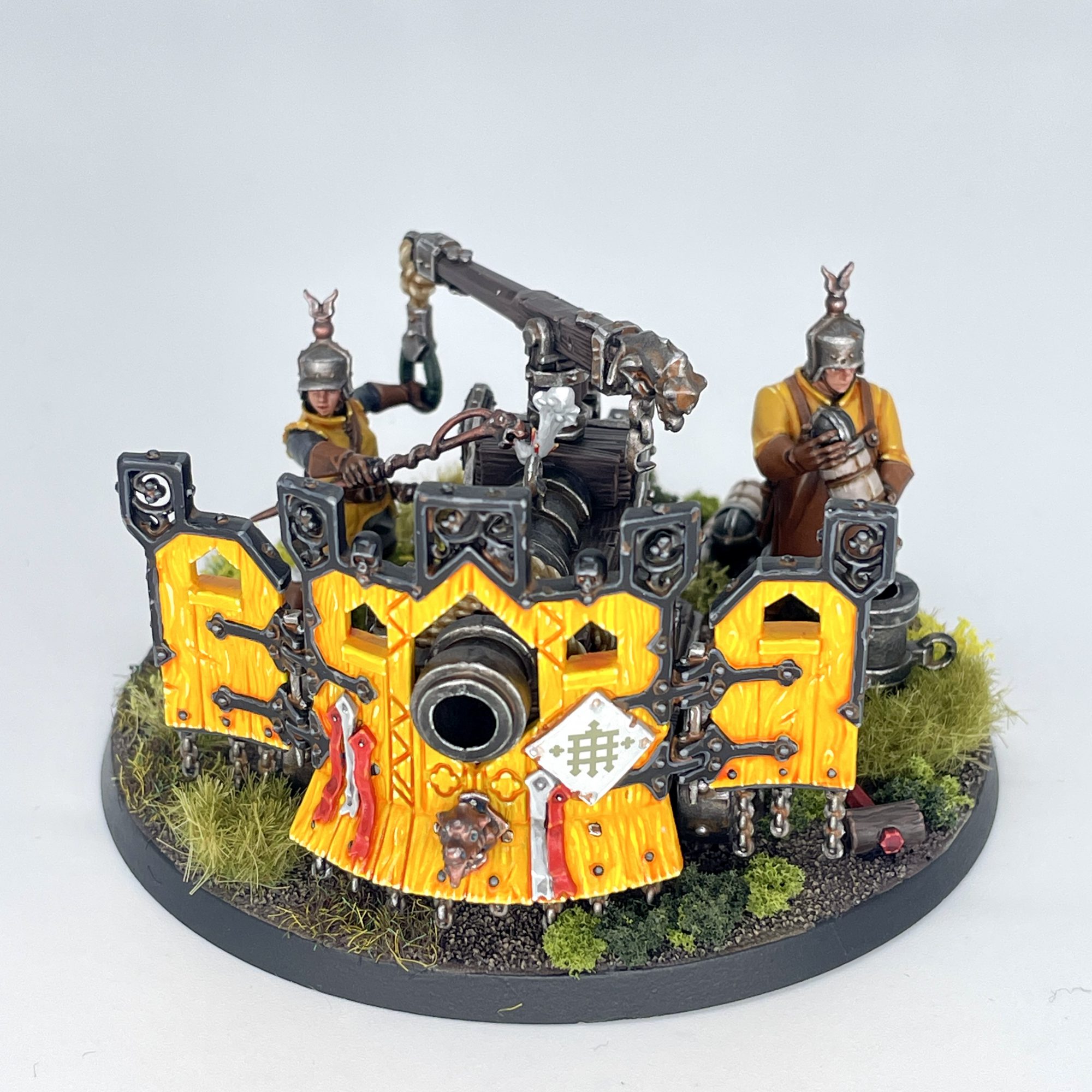
Most of my painting has been with a series of Scharff brushes that have seen better days, so I’ve been excited to get my hands on this set. After getting some washes and basecoats down with my beat up brushes, I started with this series S set to apply some edge highlights, mainly sticking with the 00. The brushes were stiff enough that I didn’t need to worry about my paint slopping about, and it made highlighting all the edges and wood grain on this big honkin’ cannon a breeze. The brush’s stiffness even meant I could use the point to highlight the wood grain in those hard to reach places.

As Pendulin mentioned earlier, the belly of these brushes means paint on them has a longer working time. First and foremost, this meant I could start an edge highlight and get the entire thing in one go, even on a long surface. Additionally, as I was painting eyeballs, buttons, or other tiny details one may approach with great trepidation, my paint wasn’t drying out by the time I got there. I won’t say these (or any) brushes will magically let you dot those pupils right every time, but they certainly made it easier to do so.
Jack
I’m not as much a big-brush user as some of the rest of our team, as I bump the thicker brush into stuff, but I’m about 20 models in with the #1 and couldn’t be happier. Previously I was using Broken Toad or Winsor & Newton brushes, which I’d get 3-4 months out of, but this has both started from a nicer place and feels like after a month it’s still in a better place than what I’ve been using in the past.

I’ve used a mixture of the #1 and the #00 for doing the detail work, depending on what surrounds the detail. They both have a plenty fine tip, it just comes down to whether I need to get in to an extremely tiny area. The #5 has seen work messily slopping washes on the base and doing base rims, and while it’s perfect for that I could also do it with completely fucked up brushes, so it’s a bit overkill. I’m sure I’ll be excited about it when I get to my next tank and need to work on larger areas by hand.
Wrap-Up
I don’t think I need to wax poetic about the Series S brushes any more. They’re great, and I’ve gotten some great results using them. I’ve now painted three boxes of minis with them, and they still look and feel brand new. Time will only tell how well they stand up on the fifth box of minis, the tenth, or beyond. But if what I’ve seen so far is any indication, then I expect good things to come.

Hey wait, doesn’t Artis Opus sell brush sets and accessories with Goonhammer branding on them? They sure do. And isn’t weird to review a product you have a business relationship with? It sure can be. Goonhammer’s relationship with Artis Opus started with Raf’s review of drybrushes, a very standard situation in which Artis Opus sent him some brushes to review. As you can see, he loved them and from that a new partnership grew.
We’re confident you’ll like these brushes and our experts are not the only experts using and loving Artis Opus brushes. This website runs on the trust that you, our audience, have in us and we would do nothing to jeopardize that trust. We don’t love these brushes because our name is on the box, we put our name on the box because we believe they’re among the best brushes you can buy.
